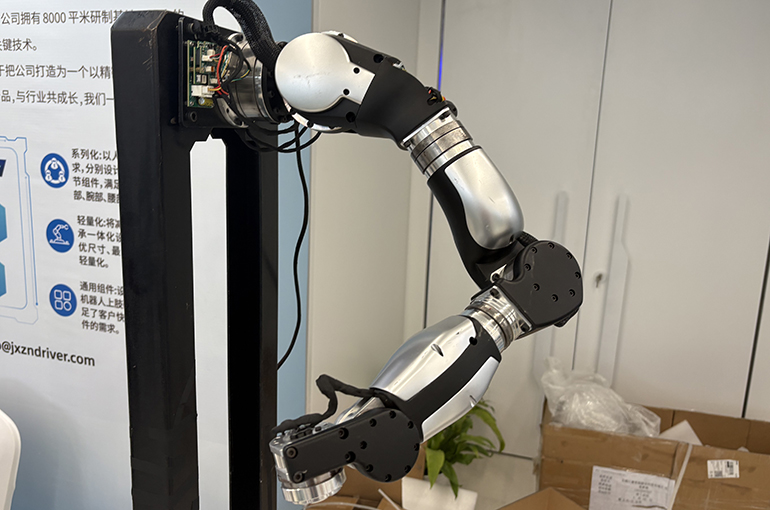 China’s Robot Parts Makers Are Stymied by Androids’ Lack of Real-World Uses
China’s Robot Parts Makers Are Stymied by Androids’ Lack of Real-World Uses(Yicai) April 16 -- Although humanoid robots have dazzled the world recently with their impressive displays of speed and agility, the reality is that sales are sluggish due to the lack of clear, commercially viable applications. This has meant that many parts suppliers are unwilling or unable to develop the custom components needed to advance the development of robots, Yicai learned through a series of interviews with industry suppliers.
Many parts suppliers are in a dilemma as research and development costs are high, yet because the production volumes are small it is difficult for them to justify the costs. And this, in turn, limits what robot makers can actually design and build, industry insiders said.
"We can make samples according to our clients’ requirements. However, if mass production has not yet started, the turnaround period for samples is typically twice as long as that for standard products," a supplier of core component samples to leading robotics firms said.
The supply chain for humanoid robots is still in its early stages, unlike more mature industries such as autonomous driving and electric vehicles.
"Seventy percent of the components that our company supplies to its humanoid robot customers, which include AgiBot, are off-the-shelf products and only 30 percent is custom-made," the firm said.
Tenpower [C1] shipped millions of batteries to robot clients last year, said Liu Xinbo, an engineer at the Suzhou-based firm. “But we normally sell tens of millions or hundreds of millions of batteries a year to our consumer electronics clients so this volume is tiny by comparison.”
Unclear Vision
Unclear application scenarios remain the biggest constraint on the demand for parts. Most companies only shipped between a few dozen and up to 100 humanoid robots in the past 12 months, according to Yicai research. For example, Fourier Intelligence delivered just 100 units of its best-selling GR-1 model in 2024.
As a result, companies like Jiangsu Hengli Precision Industry are choosing to work only with big names such as Xiaomi or Xpeng Motors and are holding off from mass production, an executive said. It is still early days yet for the industry, and if we ramp up production too soon, it might lead to a waste of resources.
Take reducers for example, although they are small in size, they cost hundreds of millions of Chinese yuan, equivalent to tens of millions of US dollars, to develop. To make a reducer requires ultra-precise machinery and big investments in testing and staff, Yang Chunren, deputy general manager of Shenzhen Kemo Innovation Robotics Technology, told Yicai.
Unclear Purpose
"When talking with humanoid robot makers, we find that they are often unsure about what exactly the robot needs to do. This makes it difficult to determine the specific battery performance requirements. So we can only provide them with what we already produce," Liu said.
Off-the-shelf parts will limit robots’ performance in certain scenarios, Liu said. Customized components are needed for the robot to perform optimally. To get out of this deadlock, robot makers and parts suppliers need to work together.
Parts developers should be prepared to handle small production runs and to update parts quickly, as customers finetune the real-world deployment of the robots, Yang said. Parts suppliers must be flexible. Around 80 percent to 90 percent of core parts need to go through several rounds of updates before mass production can start.
"This has to be a joint effort across the whole industry,” Yang said. “Only once a product is fully mature can both parts makers and robot manufacturers properly enter the production phase."
Editor: Kim Taylor